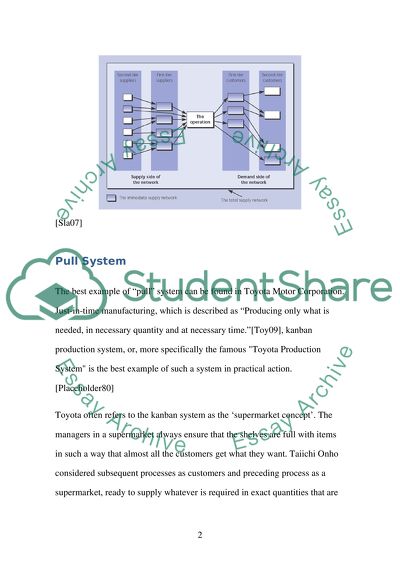Cite this document
(“Using the main text book (Operations Management: Slack, Chamber and Essay”, n.d.)
Using the main text book (Operations Management: Slack, Chamber and Essay. Retrieved from https://studentshare.org/miscellaneous/1561551-using-the-main-text-book-operations-management-slack-chamber-and-johnston-5th-ed-and-other-references-critically-describe-toyotas-supply-chain-process-using-a-diagram-process-mapping-and-explain-why-it-helps-its-operations-objectives
Using the main text book (Operations Management: Slack, Chamber and Essay. Retrieved from https://studentshare.org/miscellaneous/1561551-using-the-main-text-book-operations-management-slack-chamber-and-johnston-5th-ed-and-other-references-critically-describe-toyotas-supply-chain-process-using-a-diagram-process-mapping-and-explain-why-it-helps-its-operations-objectives
(Using the Main Text Book (Operations Management: Slack, Chamber and Essay)
Using the Main Text Book (Operations Management: Slack, Chamber and Essay. https://studentshare.org/miscellaneous/1561551-using-the-main-text-book-operations-management-slack-chamber-and-johnston-5th-ed-and-other-references-critically-describe-toyotas-supply-chain-process-using-a-diagram-process-mapping-and-explain-why-it-helps-its-operations-objectives.
Using the Main Text Book (Operations Management: Slack, Chamber and Essay. https://studentshare.org/miscellaneous/1561551-using-the-main-text-book-operations-management-slack-chamber-and-johnston-5th-ed-and-other-references-critically-describe-toyotas-supply-chain-process-using-a-diagram-process-mapping-and-explain-why-it-helps-its-operations-objectives.
“Using the Main Text Book (Operations Management: Slack, Chamber and Essay”, n.d. https://studentshare.org/miscellaneous/1561551-using-the-main-text-book-operations-management-slack-chamber-and-johnston-5th-ed-and-other-references-critically-describe-toyotas-supply-chain-process-using-a-diagram-process-mapping-and-explain-why-it-helps-its-operations-objectives.


